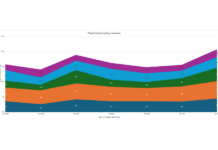By Flora McFarlane & Dan Barnes.
With the revised Markets in Financial Instruments Directive (MiFID II) set to arrive in just under five months, buy-side firms are finalising unbundling arrangements for research and execution.
The January 2018 directive will require investment research to be paid either from a fund manager’s own account or through a client research-payment account, however charges must not be linked to transaction value or volume.
It is anticipated that Vanguard will bear the costs of research rather than passing costs on to clients. A spokesperson for US$4.4 trillion asset manager, says, “We anticipate research costs under MiFID II to be under US$5 million.”
JP Morgan Asset Management (JPMAM), which has US$1.9 trillion AUM, said that research costs for equities, fixed income and cross asset will come under already its existing research capabilities, and no changes will occur to internal research teams.
It explained in a statement, “research costs will be paid by the business and not by MiFID-II client accounts”.
Fixed income giant Pimco has declined to comment on reports that it will pay for research from its own P&L. Firms such as Jupiter and M&G have decided to absorb the cost themselves of paying brokers for investment research, however there is some variation across asset classes.
For example, M&G has over 100 credit analysts and conducts virtually all fixed income research in-house. If external research for fixed income were to be needed that cost would be passed on to clients, but a spokesperson said it would be very limited in probability and cost.
Speaking to analysts in April, Andrew Formica, chief executive at Henderson, prior to the merger with Janus, said that hard payments – explicit charges – were not necessary and that soft payments – implicit charges – would still be used by many US firms.
“There have been a number of notable competitors come out and said that they will pay hard,” he said. “We certainly don’t see that as necessary at the moment, we also don’t see the vast majority of our peers doing it … we don’t see any pressure either from clients or consultants or business pressure to do it ourselves. And certainly when you talk to global players, particular the large American firms, there’s no intention to go down this route.”
Other European firms, such as LGIM and Schroders, have announced that they will be passing on the costs to clients via fees.
To better manage the structuring of payments, Nordea and Pictet Asset Management have announced that they will be using Commcise, a provider of total commission management and research evaluation to support their transition to a MiFID II Research Payment Account.
In this step towards unbundling pricing models, competition for research is likely to rise, however analysts say that managers may look beyond traditional sources, either triggering fragmentation or moving research in-house.
Last month a pricing document seen by Bloomberg suggested Barclays that it would set its costs as high as £350,000 for analyst research, with basic access costing around £23,000.
In a report by McKinsey published in June, analysis said that banks could experience a 30% drop in equity-research revenue, with clients becoming more discerning about what they pay for, leading to cuts of about US$1.2 billion of investment in the area.
©Markets Media Europe 2025
























